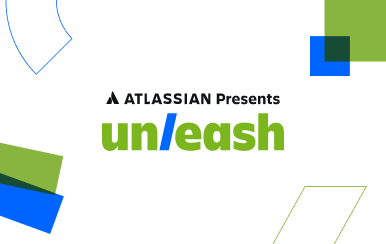Nailing your project kick-off
Your ultimate guide to starting a project on the right foot
What is a project kick-off? A project kick-off meeting is the first meeting with the project team and the client of the project where applicable. This meeting is the time to establish common goals and the purpose of the project.
Starting a project without a kick-off meeting is like setting off on a trip without any concrete plan. You’re likely to see some cool things along the way, but you’ll probably end your vacation with some weary travelers and a fairly sparse photo album. A good project kick-off meeting sets the course for a successful and smooth project collaboration.
Why should you have a project kickoff?
As the first meeting between the project team members and possibly the client or sponsor, the project kick-off is the best time to set expectations and foster strong team morale. Usually, the kick-off takes place after the statement of work or project poster has been finalized and all parties are ready to go.
Your kick-off is an opportunity to orient the team to the work at hand, decide how everyone will work together, and establish common project goals and check-ins. Think about discussing things like how you’ll communicate, how often you’ll meet, what the timeline is, and what could slow the project down (and how to avoid that).

Planning your project kick-off meeting
By failing to prepare, you are preparing to fail, they say. There’s nothing worse than showing up to a meeting with someone who hasn’t taken the time to prepare for it. Make sure you avoid losing face by planning your project kick-off meeting well.
Pre-work
A project kick-off meeting shouldn’t be an “information broadcast.” If you need to share background information in advance, do it on a shared document like a Confluence page. Project kick-off meetings should actively involve the team and anyone else who’s a stakeholder or whose work will be affected by the project.
Set up a meeting agenda to keep the meeting streamlined and efficient, try making a list of questions you want to ask your team. (Even better, send those questions to them ahead of the meeting so they’ll have time to think about their answers.) Prepare some answers based on questions you think your team might have.
Structuring the meeting
How you structure your meeting agenda depends on the project, but key elements should include the 5 W’s, or who, what, where, when, why and how:
- Introductions
- What’s the background of the project
- Why are you doing it
- What is the project scope
- What’s the action plan
- Who’s doing what
- How are you going to work together
- What does success look like
Make sure you also cover what the agenda for the kick-off meeting with your team will look like and if there are any questions or anything that hasn’t been discussed.
What’s the difference between a project kick-off meeting with your team and with customers or clients?
It could be that the project you’re about to kick-off is internal, such as a new document management system rollout or the build of a new design feature. Or you’re about to start an external project for a client or customer. In both cases, the initial kick-off meeting has the same basic function; it’s a meeting to set the tone, style, and vision for the project as a whole, and to establish common goals, tasks, and timelines with your project team.
For client work, your project kick-off meeting will include introducing the team working on the project, talking the client through the project stages, and agreeing on how to effectively work together to successfully deliver the project. It’s a chance for your team to get a stronger contextual grounding in the project, to show their understanding and enthusiasm for the project, and set the stage for a positive working relationship with your client.
What’s involved in a kick-off meeting?
So you’ve done your preplanning and you’re ready to start your kick-ass project kick-off meeting with your team. You’re so organized! Every project is different, but we recommend to trying to cover off these topics in your meeting:
Introductions
Get the ball rolling. Don’t assume everyone knows each other, so let everyone introduce themselves, their role in the project, and what they’ll be delivering. Bonus points if you can think of a fun and quick icebreaker.
Statement of work, project scope, timeline, and deliverables
Out of everything you’re discussing during the project kick-off meeting, this is one of the most important parts. It solidifies what’s involved in the project and whether or not everyone is on the same page.
The statement of work you submitted to the client describes the work you’ll deliver and by what deadline.
The project scope includes a detailed description of project deliverables and the work needed to accomplish them.
The project timeline is an overview of what is expected to be delivered and when. This can be as detailed as needed for your project.
Deliverables are the actual items you will send to your customer or client, and they’re usually noted on the timeline.
Tracking progress/milestones and communicating them
During your kick-off meeting, establish a baseline for how you plan to share progress with your stakeholders or client. You can use a status report to show how the project is tracking on budget, tasks, milestones, and timeline. The status report should be available to all stakeholders and anyone whose work might be affected by the project, to make sure everyone is aware of the progress (or delays). For client projects, it’s important that your client agrees with the level of detail they will receive in the status reports to ensure easier invoicing and payments.
Tools and methods
Put together a set of collaboration tools you’ll be using during the project and decide with your team how you’ll be using them to communicate. How will you be sharing your status reports and other files? Aligning on these things early on will help to keep the project’s communication streamlined. It’s also helpful a to make sure your team or client can access whatever tools you decide to use to keep informed about the project. Some project tools you may use include:
- A work management system to track items in progress. Examples include Jira, Basecamp, or Asana.
- A shared document system to make sure everyone (including your client) has access to important project documents and information. Examples include Microsoft docs, Google docs, or you can use a document management system that has built-in hierarchy and organization tools like Confluence.
- A communication tool like email or Slack so that the teams can stay in touch about any questions or needs that emerge.
To make it easier to communicate between teams on cross-functional projects, a tool like Atlas features automated weekly digests for project statuses. This allows stakeholders to see a week-over-week view on how work progresses through an email digest or its integrations with Slack and MS Teams.
For client work, there may be other tools you’ll need access to before you can started. Think design assets like logos, fonts, or style guides, templates, databases, logins (to CMS, social, analytics, etc), access to your client’s intranet, and the correct details for invoicing.
Risk and issue management
Communicate with your team (and with the client) how you want to identify and respond to issues together. Even with the best planning, sometimes unexpected things pop up on a project. Good project risk management for both internal and external client projects means that you and your team will be continuously identifying, analyzing, prioritizing, and mitigating risks that could get in the way of delivering a project on time and on budget. This can include team members keeping a close eye on their billable hours and keeping on top of upcoming software updates or changes to technical tools used during the project.
It’s also a good idea to ask in your client kick-off meeting what their attitude is toward change, for instance when it comes to wiggle room in the budget.
Document your project kick-off
If you’re keen to get cracking on your own project kick-off, but you’re not quite sure where to start, a project plan template in Confluence can guide you in the right direction. Give our free project plan template a try to help you to define, manage, and track your next project, and keep stakeholders in the know.
